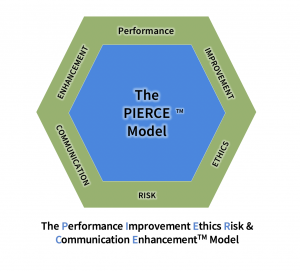Emory’s Solomon Carter releases “The 3 key purposes of organizational communication” through the Society of Corporate Compliance & Ethics
— Solomon Carter
ATLANTA, GEORGIA, UNITED STATES, September 13, 2023/EINPresswire.com/ — Emory Healthcare’s communications and policy guru Solomon Carter releases “The three key purposes of organizational communication” through the Society of Corporate Compliance & Ethics (SCCE), September edition of their Compliance and Ethics Professional Magazine.
In August, through the same publication, Carter released the executive crisis communications playbook entitled “Crisis management and the four pillars of communication” which has been met with rave revues industry wide and has become a must read for executive leadership, risk, human resources and communications experts everywhere.
In reviewing his second installment, Carter hits the mark once again. “The three key purposes of organizational communication” offers clear, concise and expertly communicated education on organizational (and executive) communications and precisely what it takes for global leadership teams to have successful outcomes in that space. Carter discusses culture shaping, risk insulation and performance or a “call to action” and shows its congruency with policy and The PEIRCE Model. The model serves as the foundation for much of his work, also featured by the SCCE as well.
Carter states “Understanding some of the nuances and intricacies of organizational communication is critical to an organization’s success. Some of the greatest strides in this area lies in being able to digest the finer points surrounding the pillars, of course in addition to having root knowledge of the pillars themselves. What lies in between the raindrops is often the secret recipe to the Frosted Flakes and this piece, helps executives to better see and understand that.”
Some of Carter’s well-known work includes but is not limited to “The COVID-19 Communications Pallet for Healthcare and Government Leaders” which was a communications standardization initiative designed to streamline communication and data during the pandemic. Utilized by states to help bend the curve as a mainframe through greater communication, the concept brought uniformity, lean and systemization to how information was processed, and communicated saving time which translated into saving lives at the beginning of the pandemic. He is also the architect of The PIERCE Model which stands for the Performance Improvement Ethics Risk and Communication Enhancement model adopted by Emory Healthcare and served as the locomotion for the COVID communications initiative as well. He also teaches and creates curricula in leadership and communication too.
Carter’s latest scholarship as author of “The three key purposes of organizational communication” is viewed as a continuation of his previously released crisis communications playbook for global executives. According to Carter, much of his work in communication is also inspired by his work as an executive of an aid organization that operates in Haiti and his mission work there over the years, particularly during the cholera outbreak.
Final Thoughts:
Carter’s latest installment through the SCCE provides the exact kind of educational opportunity needed by first year mass comms students and seasoned c-suite executives alike. As with his previously offered scholarship in this area, it represents the tip of the spear in the communications space. As a result once again, we highly recommend and it will be a staple in my library for certain.
Barry Rubenstein
Metro News Pool (U.S./European writers/news pool)
email us here
![]()
Article originally published on www.einpresswire.com as Emory Healthcare’s Communications and Policy Guru Provides Organizational Communication Resource



